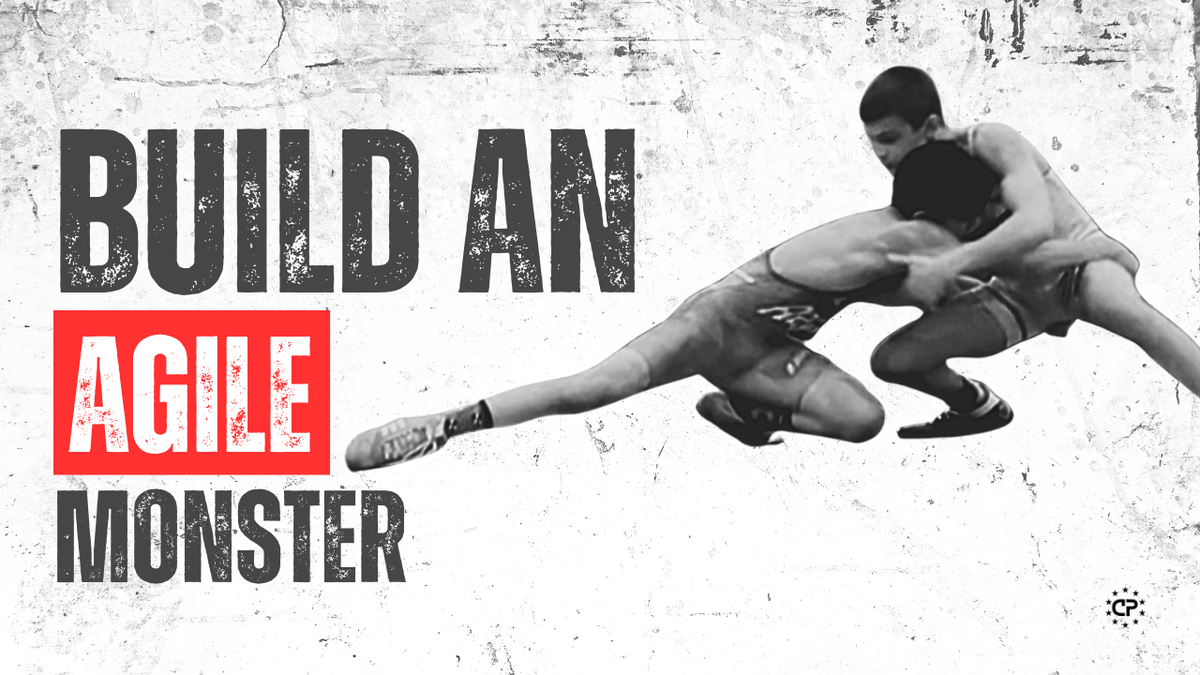Agility Ladders Are A Waste Of Time

Let's talk about agility. And let's start by talking about one of the biggest wastes of time in modern sports training: the agility ladder.
You've all seen it. The fancy, scripted, footwork drills that look super athletic. It's a staple in highlight videos. And parents, seeing this, often buy one, thinking it's the secret to making their kid faster and more agile. The problem is it quickly reaches the point of diminishing returns.
For a wrestler, it has almost zero transfer to the mat.
The Flaw: Why "Drilling" Agility Fails
A wrestling match is pure, unpredictable chaos. You are reacting to a thinking, fighting opponent who is actively trying to break your position and impose their will on you. Your agility in that moment is about your ability to absorb force, change direction under pressure, and violently re-accelerate.
An agility ladder drill is the exact opposite. It's a pre-planned, no-pressure dance recital. There is no chaos. There is no force to overcome. You are simply practicing a rehearsed pattern. You're getting good at choreography, not at being a more agile athlete.
You're better off doing more wrestling.
The Real Definition: What Agility Actually Is
So if it's not fancy footwork, what is it?
Agility is the body's ability to efficiently and powerfully change direction like changing levels in a short or changing locations on the mat. It is not a standalone skill you can practice with a gimmick. It is the result, the physical expression, of other, far more important athletic qualities you've already forged.
An athlete doesn't become agile by practicing ladder drills. An athlete becomes agile by:
- Building Overwhelming POWER: An athlete who can generate immense force quickly (i.e. heavy Squats and explosive Cleans) through all three phases: concentric, amortization, and eccentric, has the raw horsepower to stop on a dime and re-accelerate with violence.
- Mastering BALANCE: An athlete who has developed incredible stability through unilateral work (like heavy Lunges) and loaded carries can control their center of mass during a chaotic scramble.
- Developing elite COORDINATION: An athlete who has hardwired their nervous system with complex, full-body movements (like the Snatch) can make their entire body work as one seamless, powerful unit during a dynamic transition.
In short, you don't train agility. You build a powerful, balanced, and coordinated athletic machine, and agility is the inevitable result.
How We Build It: The Hierarchy of Movements
This is why my system is built on a clear Hierarchy of Movements. We don't waste time on the fluff at the bottom. We hammer the "master key" movements at the top that build the foundational qualities.
The same neurological efficiency you learn by controlling a heavy barbell in the bottom of a full range of motion squat is the same efficiency you'll use to stay in position during a scramble. The explosive hip drive you master in Olympic Lifting is the same explosive power you'll use to change direction and finish a takedown.
This is what I mean when I talk about becoming a "skilled mover." It's programming your brain and your body to be ruthlessly efficient. An agile athlete is simply one who leaks less energy than their opponent. They have better "economy of motion."
The Payoff: Dominance in the Chaos
When your wrestler has this deep, earned agility, they don't just look better; they are better. They can stay in a good position with less effort. They have more gas in the tank because they aren't wasting fuel on inefficient movements. They can react and explode with more power because their body knows how to channel force effectively.
Stop chasing the illusion of agility with ladder drills. Start forging the real thing under a barbell.
This philosophy is the bedrock of every single workout we do in the Champion's Circle. We build monsters.
Join the Champion's Circle and Get the Daily Blueprint
